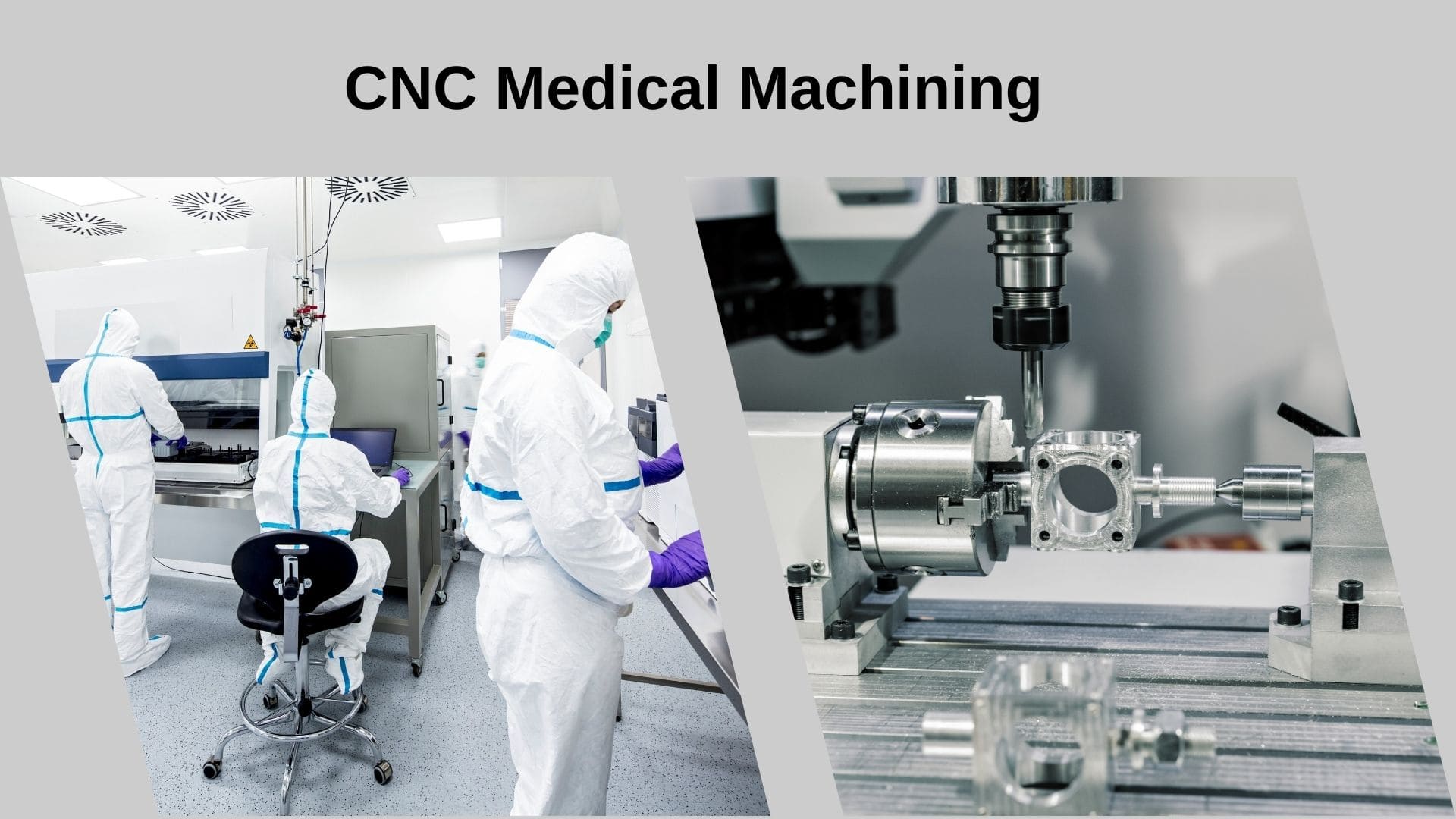The Best Guide to Medical CNC Machining: Processes, Benefits, Applications
Today, medical devices are subject to extremely high demands for precision and reliability. As a key technology, medical CNC machining plays a vital role in the field of medical device manufacturing. With its excellent accuracy, consistency and many advantages, it has brought revolutionary changes to the medical industry and strongly promoted the continuous development of medical innovation. Next, we will take a deep look at the key aspects of medical CNC machining.
1.Introduction to Medical CNC Machining
Medical CNC machining is an advanced process that uses computer-controlled machinery to manufacture precision medical parts and equipment. The importance of medical CNC machining in today’s medical industry is self-evident. It can ensure extremely high levels of accuracy and consistency in the production of complex medical parts, which plays a decisive role in the quality and performance of medical devices.
Through precise programming and control, medical CNC machining can process various materials such as metals (stainless steel, titanium alloy, etc.), plastics (PEEK, etc.) and ceramics with micron-level accuracy to meet the medical field’s demand for medical parts of different materials. Its processing process is highly automated, which not only improves production efficiency, but also greatly reduces the impact of human factors on product quality, so that each medical part can have stable and excellent performance.
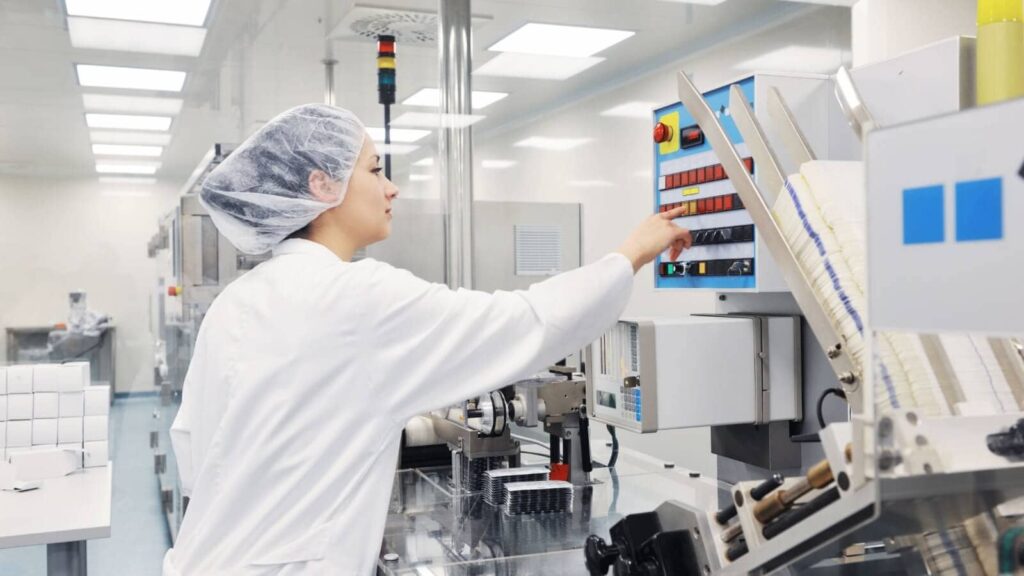
2.Advantages of Medical CNC Machining
1.High Precision
Medical CNC machining can achieve strict tolerance levels, typically ±0.001 inches (±0.0254 mm) or lower, which is critical for the precise implementation of complex designs of medical devices.
2.Excellent surface finish
Medical CNC machining can achieve excellent surface finishes that typically range from 0.2 to 0.4 Ra (average roughness). This finish can effectively reduce the risk of infection or complications when medical device parts come into contact with human tissue.
3.Good dimensional stability
The thermal stability of CNC machine tools ensures that the deviation of machined parts from the required dimensions is minimized even in the face of various working conditions during long production processes. For medical devices that require multiple parts to fit seamlessly, such as pacemakers, dimensional stability is one of the key factors to ensure their normal operation.
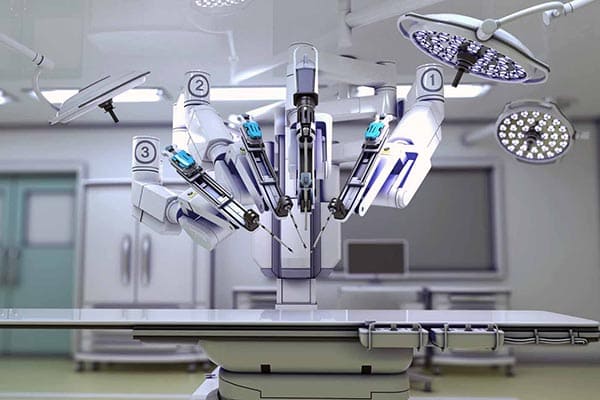
4.High repeatability
The repeatability of CNC machine tools is typically within ±0.003 mm, which means that every part produced by medical CNC machining is almost exactly the same. In the medical field, this consistency is invaluable in ensuring the stability of device efficacy and patient safety.
5.Strict quality control
Advanced CNC machines are equipped with online inspection tools such as probes and laser scanners to verify part dimensions in real time during the manufacturing process. Once deviations are found, they can be corrected immediately, thereby maintaining high precision and accuracy at all times, ensuring that every medical CNC machined product meets strict quality standards and regulatory requirements.
6.Rapid prototyping
Medical CNC machining can greatly shorten the turnaround time for prototypes and finished products, and quickly achieve the transformation from design to finished product. This efficient production speed is crucial to medical innovation. It can significantly accelerate the development process of medical devices, enable new medical technologies and products to be brought to market faster, and provide patients with timely treatment solutions.
7.Material versatility
Medical CNC machining is compatible with a variety of materials, including metals (such as stainless steel, titanium, etc.), plastics (such as PEEK, UHMWPE, PTFE, etc.) and ceramics. This wide range of material adaptability allows manufacturers to flexibly select the most suitable materials according to the needs of specific medical applications, thereby optimizing the performance and biocompatibility of medical devices.
8.Good regulatory compliance
The medical industry is strictly regulated and has extremely high requirements for the quality and safety of medical devices. The precise control and comprehensive documentation capabilities provided by medical CNC machining help manufacturers meet these strict regulatory standards. From the procurement of raw materials to every link in the production process, accurate records and controls can be carried out to ensure that all manufactured components not only comply with industry regulations, but also have reliable safety and effectiveness, providing solid protection for patients’ health.
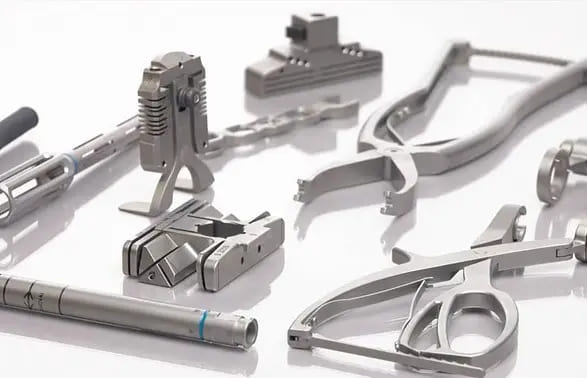
9.Significant cost-effectiveness
Although the initial investment in CNC machinery is relatively high, in the long run, its automated production and efficient processing can effectively reduce labor costs and reduce material waste. This cost advantage is particularly obvious when mass-producing medical devices, making medical CNC machining an affordable choice for producing high-quality medical devices, while also helping to improve the overall economic benefits of the medical industry and promote the popularization and development of medical technology.
3. Materials for Medical CNC Processing
(I) Stainless Steel
Advantages
Strong corrosion resistance: Stainless steel, especially 316L model, has excellent resistance to rust and corrosion, and can remain stable in complex environments such as human body fluids. It is very suitable for manufacturing medical devices such as surgical instruments and implants that need to be in long-term contact with the internal environment of the human body.
High strength and durability: It has excellent mechanical strength and can withstand various physical stresses during surgery and wear and tear during daily use, ensuring the service life and reliability of medical devices. For example, instruments such as surgical scissors require sufficient strength to complete various shearing operations, and the high strength characteristics of stainless steel just meet this demand.
Good biocompatibility: After a large number of medical experiments and clinical verification, stainless steel has good compatibility with human tissues and will not cause obvious rejection reactions, providing protection for the health of patients.
Technical parameters
Tensile strength: Up to 580MPa, this strength index ensures the reliability of stainless steel when subjected to tension, enabling it to maintain structural integrity in various complex mechanical environments.
Hardness: 95 HRB (Rockwell hardness B). The appropriate hardness makes stainless steel have a certain rigidity and maintain good toughness during processing and use, and it is not easy to deform or damage.
Density: 8.0 g/cm3. The relatively high density makes it have a good texture and stability, and it is also convenient for precise control and operation during processing.
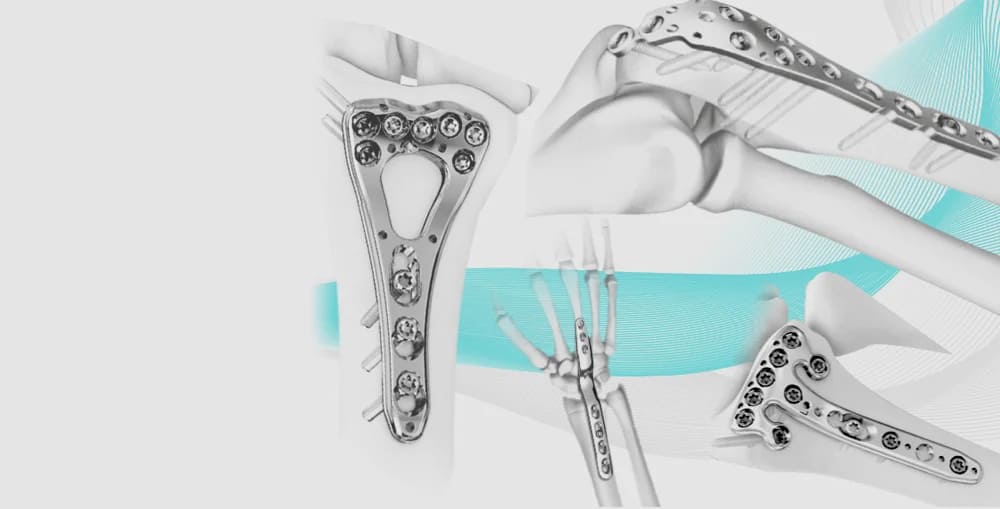
(II) Titanium and titanium alloys
Advantages
High strength-to-weight ratio: Titanium has the same strength as steel, but is much lighter, which is crucial for load-bearing implants. For example, in the field of orthopedic implants, such as artificial joints, the use of titanium alloys can reduce the patient’s physical burden while ensuring that the implant has sufficient strength to support the body’s movement and load.
Excellent biocompatibility: Titanium is highly compatible with human tissue and can be well combined with bones, promoting the growth and healing of bone tissue, and improving the long-term stability and success rate of implants.
Excellent corrosion resistance: Titanium can effectively resist the corrosion of human body fluids, and will hardly degrade after long-term implantation in the human body, ensuring the safety and service life of the implant.
Technical parameters
Tensile strength: Ti-6Al-4V (a common titanium alloy) can reach up to 900MPa. Such high tensile strength enables it to withstand large external forces and is suitable for various medical application scenarios with high strength requirements.
Density: 4.5g/cm³. The relatively light density reduces the overall weight of medical devices while meeting the strength requirements, improving the wearing comfort and convenience of patients.
Young’s modulus: 110GPa. The Young’s modulus reflects the rigidity and elasticity of the material. The appropriate Young’s modulus enables titanium alloys to have a certain rigidity while also having a certain elastic deformation ability, which can better adapt to the physiological movement of the human body.
(III) Advanced plastics (such as PEEK, UHMWPE)
Advantages
Lightweight and durable: Advanced plastics such as PEEK and UHMWPE are strong and durable, and at the same time, they are light in weight, which can significantly reduce the overall weight of medical devices. For example, in some portable medical devices or medical devices that patients need to wear for a long time, the use of these lightweight plastics can improve the patient’s experience and compliance.
Excellent surface finish: These plastic materials can achieve strict tolerance control through CNC machining to obtain excellent surface finish. This is of great significance in reducing wear, friction coefficient and bacterial growth during the use of medical devices, thereby ensuring the service life and safety of the equipment.
Good biocompatibility: After rigorous testing and verification, these advanced plastics have good compatibility with human tissues, which can reduce the risk of adverse reactions during patient use. For example, in some oral medical devices or short-term medical devices implanted in the body, good biocompatibility is one of the key factors in material selection.
Technical parameters (taking PEEK as an example)
Tensile strength: 90 – 100MPa, although it is lower than metal materials, it is sufficient for some medical application scenarios that do not need to withstand excessive tensile forces. At the same time, it has good comprehensive performance and can meet the design requirements of specific medical devices.
Density: 1.3g/cm³, the extremely low density gives it a significant advantage in achieving lightweight, further highlighting its value in medical applications.
Melting point: about 343°C. The higher melting point enables PEEK to maintain stable performance in high-temperature environments, broadening its application range. For example, in some medical devices that require high-temperature sterilization or work in high-temperature environments, PEEK can function reliably.
4.Common medical parts produced by medical CNC processing
Surgical instruments
Surgical instruments are important tools used directly for patient treatment in the medical field. Their quality and performance are directly related to the effect of the operation and the safety of the patient. Surgical instruments such as scalpels, tweezers and clamps carefully made by medical CNC processing can ensure their best performance. During the processing process, strict control of dimensional accuracy and surface quality makes surgical instruments more accurate and flexible during operation, providing doctors with a good surgical experience, and also providing strong protection for the safety of patients’ surgery.
Orthopedic implants
Orthopedic implants such as knee and hip replacement parts have an important impact on patients’ rehabilitation and quality of life. These implants need to be designed according to precise specifications to ensure perfect matching with human bones and good biocompatibility. Medical CNC processing can achieve high-precision manufacturing and ensure that the implants have excellent mechanical strength and long-term stability. For example, when processing hip replacement parts, by precisely controlling the size and shape, it can fit the physiological structure of the human hip joint, withstand the body’s motion load, while reducing the stimulation to surrounding tissues, improving the patient’s rehabilitation effect and quality of life.
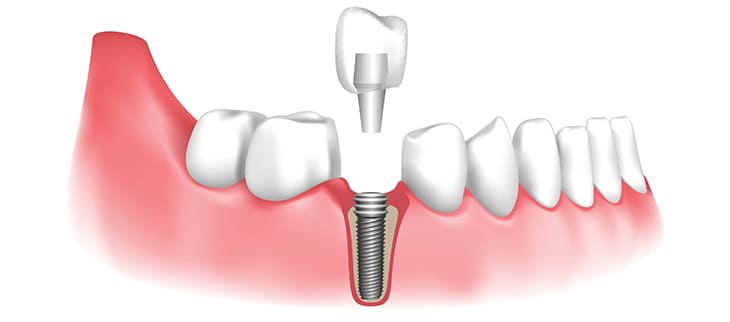
Dental implants
Medical CNC machining can produce customized dental implants, abutments, and crowns to ensure that they can accurately fit the patient’s oral anatomy, achieve good aesthetic effects and lasting durability. Through advanced CAD/CAM technology, personalized design is carried out according to the patient’s oral scan data, and then medical CNC machining is used for precise manufacturing, so that dental implants can be closely integrated with the patient’s alveolar bone, restore the function and beauty of teeth, and provide patients with better oral restoration solutions.
5.How to design CNC machined medical parts
(I) Material selection
Choosing biocompatible materials is the primary consideration in designing medical CNC machined parts. Materials such as medical-grade stainless steel, titanium or PEEK can ensure patient safety and part durability due to their good biocompatibility and mechanical properties.
(II) Design specifications
Adherence to precise dimensional and tolerance specifications is key to the design of medical parts. Typically, tolerances are required within microns to meet the stringent requirements of medical applications. During the design process, the function and use environment of the parts need to be fully considered to ensure the accuracy and stability of the design dimensions.
(III) Prototype design and testing
Using CAD software to create detailed design models and perform simulation analysis is an important means of predicting potential problems. Through simulation, the mechanical properties and thermal properties of parts under different working conditions can be analyzed, and design defects can be discovered in advance and optimized. After the design is completed, a prototype is developed and rigorously tested to verify the feasibility and reliability of the design.
(IV) Compliance
Ensuring that the design complies with regulatory standards related to medical devices, such as ISO 13485, is an important part of ensuring the quality and safety of medical parts.
(V) Manufacturing Cooperation
It is essential to cooperate with experienced medical CNC machining experts. They are familiar with the complexity and machining requirements of medical parts and can provide high-quality machining services according to design drawings. During the cooperation process, machining experts can make reasonable suggestions and improvement plans for the design based on the actual machining situation, and further optimize the design and manufacturing process of parts.
6. Medical Processing Technology and Techniques
(I) Milling
Milling is one of the commonly used processes in medical CNC machining and is used to manufacture complex parts with various geometries. Its typical parameters include spindle speeds ranging from 4,000 to 20,000 RPM and feed rates ranging from 50 to 500 inches/minute. The specific parameter selection depends on the hardness of the material and the complexity of the part.
(II) Turning
Turning is commonly used to produce cylindrical parts such as bone screws and implants. In turning operations, spindle speeds of up to 10,000 RPM may be used to obtain precise results, and cutting feed rates are in the range of 0.01 to 0.1 mm per revolution.
(III) Drilling
Drilling is another commonly used process in medical CNC machining. The drilling process is often used to make precise holes in medical parts. This process typically uses a spindle speed between 3,000 and 15,000 RPM and a drilling feed rate of 0.1 to 1.5 inches per minute, depending on the hardness of the material and the diameter of the hole.
(IV) Grinding
Grinding is also a common process in medical CNC machining. The grinding process is mainly used to achieve excellent surface finish and tight tolerances, especially for the machining of hard metals. The grinding process is a precision machining method that gradually removes microscopic roughness on the surface of the material through the micro-cutting and friction between the abrasive particles and the workpiece surface, thereby obtaining a high surface finish and high-precision dimensions.
(V) Electrical discharge machining (EDM)
Electrospark machining is also commonly used in medical CNC machining. EDM is suitable for machining medical parts with complex shapes and hard materials. Its voltage setting range is usually 50 to 500 volts and the discharge current is 0.1 to 50 amps. By controlling these parameters, accurate material removal rates can be achieved. EDM processing utilizes the high temperature generated by pulse discharge between the electrode and the workpiece to melt and vaporize the material, thereby achieving part processing.
Finally
As a core technology in the field of medical device manufacturing, medical CNC machining has injected strong impetus into the development of the medical industry with its many advantages such as high precision, rapid prototyping, and strong material adaptability. Medical CNC machining can meet the manufacturing needs of various complex medical devices and ensure the quality, performance and safety of medical devices. In the future, with the continuous advancement of medical technology and the increasing requirements for medical devices, medical CNC machining will continue to play a key role and continuously promote the development of medical innovation.
If you need an experienced medical CNC machining manufacturer, Xavier is your best choice. The Xavier team is well-equipped and can provide high-quality machining solutions to meet your personalized machining needs. If you need more information or to discuss your machining needs with us, please feel free to contact us.
